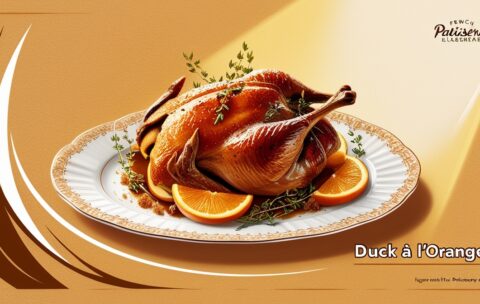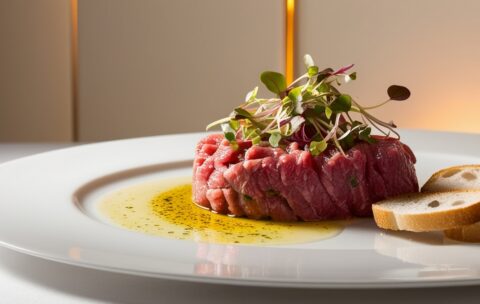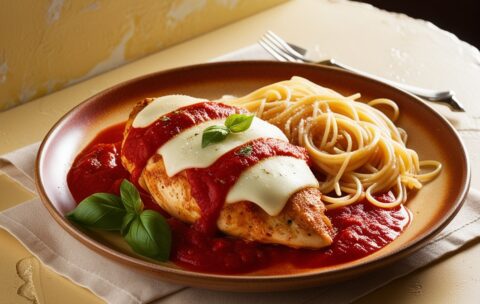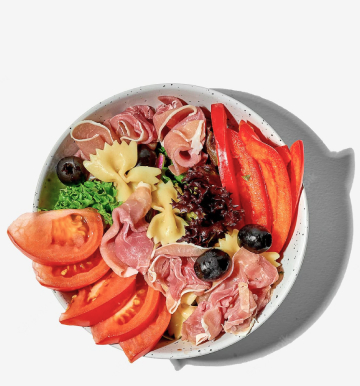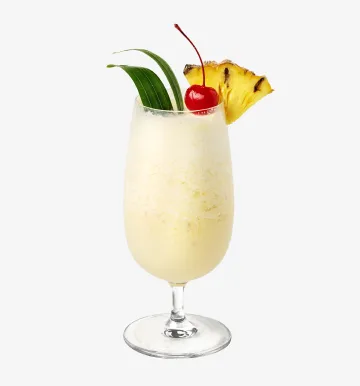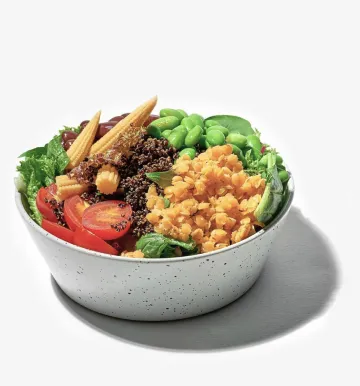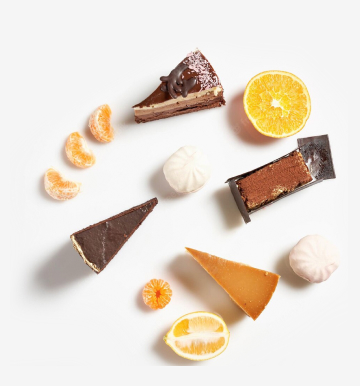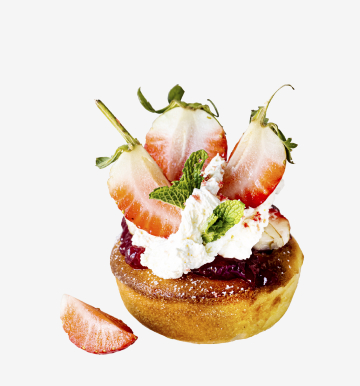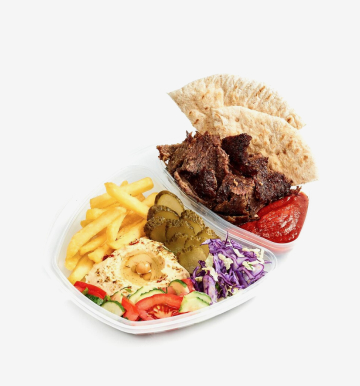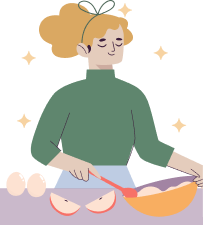Home Update 02
October 4, 2023 2025-06-05 13:04Home Update 02
Become a Home Chef
Learn to cook from scratch and master restaurant-quality meals in your own kitchen. Perfect for beginners and food lovers.

Our Top Courses
We've selected the best programs to get you started. Each course offers step-by-step lessons, hands-on recipes, and guaranteed results — even for beginners.
Old Fashioned
7 Lessons
1.9 hour
Intermediate
What you'll learn
How to properly muddle a sugar cube (or measure simple syrup) with bitters to create the foundation of an Old Fashioned.
Differences between using bourbon versus rye whiskey: flavor profiles, proof considerations, and regional traditions.
Techniques for selecting and expressing citrus peel to maximize aromatic oils without adding bitterness.
Best practices for choosing ice (large cubes or spheres) to control dilution and maintain temperature.
Stirring methods that achieve a silky texture and proper dilution—timing, tool grip, and motion.
Variations on the classic recipe, such as adding a barspoon of water, swapping citrus types, or using flavored bitters.
Chocolate Fondant
3 Lessons
1 hour
Intermediate
What you'll learn
Ingredient Selection & Preparation: How to choose high-quality chocolate, cocoa powder, and eggs; correctly measure and prepare ingredients for optimal texture.
Temperature Management: Techniques for melting chocolate and butter to avoid seizing or burning, including bain-marie and microwave methods.
Batter Consistency: How to achieve the right balance between a custard-like batter and a stable cake structure so that the exterior sets while the interior remains molten.
Molding & Baking: Proper greasing, flouring, or buttering of molds; timing and oven temperature adjustments to guarantee a uniform rise without overcooking.
Plating & Presentation: Tips for unmolding the fondant cleanly, garnishing ideas (e.g., dusted cocoa, fresh berries, ice cream pairing), and creating an elegant plating design.
Troubleshooting Common Issues: Solutions for common pitfalls—such as undercooked centers that are too runny, overbaked cakes with no molten core, or cracked exteriors.
Duck Breast with Caramelized Apples and Port Wine Sauce
2 Lessons
1.9 hour
Intermediate
What you'll learn
How to score and season duck breast for optimal rendered fat and crisp skin
Techniques for safely rendering duck fat in a cold pan and achieving uniform sear
Steps to caramelize apple wedges using butter, brown sugar, and a pinch of cinnamon
Methods for constructing a port wine reduction with shallots, herbs, and a splash of balsamic
Timing coordination to rest the duck and serve apples and sauce at the perfect temperature
Duck à l’Orange
2 Lessons
2.6 hours
Intermediate
What you'll learn
How to properly score and season duck breast (or prepare a whole duck) for even fat rendering and a crisp exterior.
Techniques for searing and roasting duck to medium-rare (internal temperature ~135 °F/57 °C) while maintaining juicy meat.
Fundamental steps for making an orange reduction: zesting, juicing, and balancing sweetness, acidity, and depth with stock and aromatics.
Methods for deglazing the pan and incorporating pan drippings into the sauce for added umami.
Strategies for finishing the sauce (mounting with butter, straining) so it coats the duck without becoming cloying.
Plating suggestions: slicing the breast, spooning sauce without drowning, and garnishing with orange segments or microgreens.
Wagyu Beef Tartare with Truffle Oil
2 Lessons
58 minutes
Intermediate
What you'll learn
How to identify and source authentic Wagyu beef suitable for tartare
Proper techniques for trimming, dicing, and handling raw beef for safety and texture
Seasoning strategies that highlight Wagyu’s rich marbling without overpowering it
How to incorporate truffle oil (or alternative truffle components) for depth of flavor
Tips for balancing acidity, fat, and aromatics in a classic tartare base (mustard, capers, herbs, etc.)
Step-by-step instructions for elegant plating and finishing touches (microgreens, egg yolk, crispy brioche)
Food-safety best practices when serving raw beef to guests
French Gateau & Entremet Principles
2 Lessons
1.3 hour
Intermediate
What you'll learn
Fundamental Structures: How to build entremets layer by layer—choosing and baking the right sponge (génoise, Joconde, biscuit cuillère), creating thin croustillant layers, and assembling mousse and bavarois tiers for height and stability.
Texture & Temperature Management: Techniques to ensure each component sets properly (e.g., mousse firmness, gelatin bloom, glaze viscosity) and how to keep layers distinct without bleeding.
Flavor Profiling & Balance: Pairing fruit purées, chocolate, nuts, and creams to achieve harmonious taste profiles. Understanding acidity, sweetness, and how to cut richness with complementary elements (fruit inserts, crunchy praline).
Advanced Finishing Techniques: Preparing and applying a smooth mirror glaze, torching velour sprays, using transfer sheets, and piping delicate decorations. Learning how to achieve a polished, professional look every time.
Assembly & Troubleshooting: Best practices for unmolding, repositioning, and storing entremets. Identifying and correcting common issues—sogginess, collapsed layers, uneven glazes.
Presentation & Plating: Strategies for cutting perfectly even slices, garnishing with textures (tuile, cocoa nibs, spun sugar), and arranging plated portions so they look as good as they taste.
Chicken Parmesan
2 Lessons
1.8 hour
Intermediate
What you'll learn
Outcome Description
Selecting & Preparing Chicken Choose ideal cuts (boneless, skinless breasts or tenderloins), pound to even thickness, and properly season.
Three-Stage Breading Technique Execute a flour-dredge, egg wash, and breadcrumb coating (panko or Italian-style) for consistent crispness.
Marinara Sauce Essentials Create a balanced tomato sauce with sautéed aromatics, herbs, and proper simmering techniques for depth.
Cheese Layering & Melting Understand how to layer mozzarella and Parmigiano-Reggiano for optimal melt, flavor, and browning.
Baking & Broiling Methods Bake cutlets at the correct temperature, then broil to achieve a bubbly, golden cheese crust without overcooking chicken.
Serving & Garnishing Present the dish with complementary sides (pasta, salad), fresh basil, and extra cheese shavings.
Beef Stroganoff
3 Lessons
2.3 hours
Intermediate
What you'll learn
Ingredient Selection & Preparation:
How to choose ideal beef cuts (such as sirloin, tenderloin, or ribeye) and properly trim and slice them into even, bite-sized strips.
Techniques for cleaning, slicing, and preparing mushrooms, onions, and garlic to maximize flavor release.
Sautéing Fundamentals:
Maintaining optimal pan temperature for searing beef without overcooking.
Building a flavor base by sautéing onions and mushrooms to the right level of caramelization.
Sauce Development & Balancing:
Creating a roux or pan-deglazing method to thicken the sauce naturally.
Incorporating sour cream (or crème fraîche) at the correct temperature to prevent curdling.
Seasoning strategies—mustard, paprika, Worcestershire sauce—for depth and complexity.
Timing & Texture Control:
Managing cook times to ensure beef remains tender while mushrooms and onions soften.
Knowing when to add sour cream off-heat versus on low heat for optimal creaminess.
Adjusting consistency—when to thin with stock or thicken by reduction.
Presentation & Serving Suggestions:
Plating options: over buttered egg noodles, fluffy rice, or silky mashed potatoes.
Garnishing ideas—fresh parsley, chives, or dill—for color contrast and aroma.
Tips for reheating or making ahead without sacrificing texture.
Paella Valenciana
2 Lessons
3.3 hours
Intermediate
What you'll learn
History and Regional Context
Origins of Paella Valenciana and its connections to Valencian agricultural traditions.
Distinctions between classic Valencian paella, seafood paella (Paella de Mariscos), and other regional variants.
Selecting and Preparing Ingredients
Rice varieties (Bomba vs. Calasparra) and their impact on texture.
Choosing quality proteins (chicken and/or rabbit), native beans (judía verde, garrafó), olive oil, and saffron threads.
Preparing vegetables: green beans (bajoqueta), garrafó beans, fresh tomatoes, and garlic.
Cooking Techniques and Timing
Building a sofrito base: sautéing meat, vegetables, and spices to develop depth of flavor.
Proper rice-to-liquid ratio and how to incorporate stock infused with saffron.
Achieving the prized socarrat (crispy rice crust) without burning.
Adjusting heat levels for even cooking and optimal moisture absorption.
Presentation and Serving
Traditional ways to serve Paella Valenciana—family style straight from the paellera.
Garnishing options (lemon wedges, fresh parsley) to enhance aroma and appearance.
Tips for reheating and storing leftovers without compromising texture.
Coq au Vin
3 Lessons
2.3 hours
Intermediate
What you'll learn
Ingredient Selection & Preparation:
How to choose the right cut of chicken (whole, thighs, or a combination) and select complementary wine (e.g., Burgundy Pinot Noir or alternative regional varieties).
Proper techniques for trimming, seasoning, and preparing lardons, mushrooms, and root vegetables.
Braising Fundamentals:
The importance of searing chicken pieces for color and flavor development.
How to deglaze a Dutch oven or heavy-bottomed casserole with red wine, preserving all the fond (browned bits) on the pan bottom.
Flavor-Building Strategies:
Layering aromatics—onion, garlic, carrot, thyme, and bay leaf—to create depth.
Controlling heat and timing for a slow, gentle simmer that yields tender meat and a concentrated sauce.
Sauce Reduction & Finishing Touches:
Techniques for skimming excess fat and reducing the braising liquid to a velvety consistency.
Tips for adding mushrooms and optional garnishes (parsley, fresh herbs) at the final stage for maximum aroma and texture.
Plating & Serving Suggestions:
How to present Coq au Vin with traditional accompaniments (e.g., buttered noodles, mashed potatoes, crusty bread).
Strategies for reheating or holding the dish without sacrificing quality, making it ideal for dinner parties.
Choose Your Category
Our courses are grouped by category to help you find what suits your taste. From quick dinners to gourmet desserts — start with what inspires you.



About Our Culinary Journey
We are passionate about bringing the joy of cooking to everyone. Our mission is to empower food lovers with the skills and confidence to create delicious meals at home. With expert chefs, innovative teaching methods, and a love for culinary arts, we’re here to inspire your kitchen adventures.
Our Commitment
Everyone can cook well. Our courses offer clear guidance to ensure success for all skill levels.
Community Focus
Join our foodie community. Share creations and grow in a supportive environment.
Why Choose Our Culinary Courses?
Our courses are designed to make cooking fun, accessible, and inspiring. Whether you're a beginner or a seasoned cook, our unique features will help you elevate your skills and unleash your culinary creativity.

Expert Instructors
Learn from world-class chefs with years of experience. Our instructors guide you step-by-step, sharing professional tips.
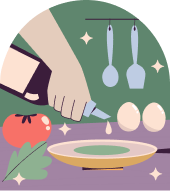
Flexible Learning
Study at your own pace, anytime, anywhere. Our online platform offers 24/7 access to lessons, so you can fit cooking into your busy schedule.

Hands-On Recipes
Practice with real recipes designed for all skill levels. From classic dishes to modern creations, you’ll master meals that impress every time.
What Our
Students Say
Hear from our happy students who have transformed their cooking skills with our courses. From beginners to seasoned cooks, our community loves sharing their success stories!
"This course completely changed how I cook! The instructors are so knowledgeable, and the lessons are easy to follow. I’m now confident making dishes I never thought I could."
Emma Johnson
"I love the flexibility of these courses. I can learn at my own pace and still feel supported. The recipes are amazing, and I’ve impressed my family with new dishes!"
Michael Chen
"The vegan cooking course was a game-changer for me. I learned so many creative ways to make plant-based meals that taste incredible. Highly recommend!"
Sophie Martinez
"The hands-on approach made learning so fun! I went from burning toast to baking artisan bread in weeks. Thank you for such an inspiring experience!"
James Carter
Discover Our Newest Culinary Courses
Get inspired by our latest additions! These exciting courses bring fresh ideas and techniques to your kitchen, perfect for food lovers eager to try something new. Browse our carousel to find your next culinary adventure.
Art of Fondant & Modeling Chocolate
4 Lessons
1.2 hour
Intermediate
What you'll learn
Fondant Fundamentals: How to knead, roll, and cover a cake in smooth fondant; troubleshooting common issues like tearing or cracking.
Color Mixing & Painting: Methods for achieving uniform pastel or vibrant hues using gel, powder, and airbrush techniques; blending shades for gradients and ombré effects.
Modeling Chocolate Preparation: Step-by-step process to make stable, pliable modeling chocolate at home—adjusting ratios for firmness or flexibility.
Sculpting Techniques: Building 3D elements (flowers, animals, figurines) layer by layer; using armature supports for larger models.
Texture & Embellishment: Creating realistic surface details—wood grain, lace patterns, ruffles, and draping—using molds, veiners, embossing tools, and impression mats.
Piping & Detailing: Accenting fondant and modeling chocolate pieces with royal icing, edible beads, and dusting powders to add dimension and realism.
Assembly & Structural Integrity: Best practices for attaching heavy sugar components to cake tiers; internal support systems (dowels, skewers) to ensure stability during transport and display.
Crispy Onion Rings
2 Lessons
3.8 hours
Intermediate
What you'll learn
How to choose the ideal onion variety (e.g., Vidalia, Walla Walla, or Spanish) for sweetness and structural integrity.
Techniques for slicing uniform rings to ensure even frying without undercooked centers or burnt edges.
Step-by-step instructions for creating a light, airy batter (including tempura-style options) that clings to the onion.
Methods for proper dredging, double-dipping, and maintaining batter consistency to achieve an ultra-crispy crust.
Temperature control in a frying setup—whether using a deep fryer, heavy pot, or cast-iron skillet—and how to monitor oil temperature accurately.
Tips for post-fry handling: draining rings on wire racks, timing seasoning applications, and preventing sogginess when serving.
Variations in seasoning blends (spicy paprika, garlic powder, or Parmesan) to customize flavor profiles.
Honey Cake
6 Lessons
3.9 hours
Intermediate
What you'll learn
Ingredient Harmony
How honey interacts with flour, eggs, and spices for moist crumb.
Balancing baking soda and acidic components to ensure proper rise.
Mixing & Resting
Techniques for creaming butter, sugar, and honey without overmixing.
Importance of resting batter to develop flavor.
Baking & Texture Checks
Identifying doneness via toothpick test vs. spring-back method.
Preventing dryness through temperature control and timing.
Presentation & Serving
Simple glazing ideas and dusting techniques.
Pairing suggestions (e.g., whipped cream, fresh berries).
French Gateau & Entremet Principles
2 Lessons
1.3 hour
Intermediate
What you'll learn
Fundamental Structures: How to build entremets layer by layer—choosing and baking the right sponge (génoise, Joconde, biscuit cuillère), creating thin croustillant layers, and assembling mousse and bavarois tiers for height and stability.
Texture & Temperature Management: Techniques to ensure each component sets properly (e.g., mousse firmness, gelatin bloom, glaze viscosity) and how to keep layers distinct without bleeding.
Flavor Profiling & Balance: Pairing fruit purées, chocolate, nuts, and creams to achieve harmonious taste profiles. Understanding acidity, sweetness, and how to cut richness with complementary elements (fruit inserts, crunchy praline).
Advanced Finishing Techniques: Preparing and applying a smooth mirror glaze, torching velour sprays, using transfer sheets, and piping delicate decorations. Learning how to achieve a polished, professional look every time.
Assembly & Troubleshooting: Best practices for unmolding, repositioning, and storing entremets. Identifying and correcting common issues—sogginess, collapsed layers, uneven glazes.
Presentation & Plating: Strategies for cutting perfectly even slices, garnishing with textures (tuile, cocoa nibs, spun sugar), and arranging plated portions so they look as good as they taste.
Salvatore’s Legacy
5 Lessons
3.3 hours
Intermediate
What you'll learn
How to select and source top-tier amaro and ultra-aged rum for balanced depth
Techniques for saffron-infusing sweet vermouth and achieving optimal flavor extraction
Proper stirring methods to maintain clarity and texture
The importance of glassware choice and garnish to enhance aroma and presentation
How to adjust sweetness and bitterness ratios to suit individual palates
Pairing Salvatore’s Legacy with fine cheeses, dark chocolate, or light desserts
Chicken Parmesan
2 Lessons
1.8 hour
Intermediate
What you'll learn
Outcome Description
Selecting & Preparing Chicken Choose ideal cuts (boneless, skinless breasts or tenderloins), pound to even thickness, and properly season.
Three-Stage Breading Technique Execute a flour-dredge, egg wash, and breadcrumb coating (panko or Italian-style) for consistent crispness.
Marinara Sauce Essentials Create a balanced tomato sauce with sautéed aromatics, herbs, and proper simmering techniques for depth.
Cheese Layering & Melting Understand how to layer mozzarella and Parmigiano-Reggiano for optimal melt, flavor, and browning.
Baking & Broiling Methods Bake cutlets at the correct temperature, then broil to achieve a bubbly, golden cheese crust without overcooking chicken.
Serving & Garnishing Present the dish with complementary sides (pasta, salad), fresh basil, and extra cheese shavings.
Buttercream Icing Techniques
5 Lessons
59 minutes
Intermediate
What you'll learn
Buttercream Foundations: Basic ratios for American, Swiss, Italian, and French buttercreams; key differences in texture, sweetness, and stability.
Temperature Control: How to handle ingredients (room-temperature vs. chilled butter, sugar syrup stages) to prevent graininess or separation.
Flavoring & Infusing: Incorporating extracts, fruit purées, ganache, or cocoa; balancing sweetness and fat without compromising consistency.
Coloring Strategies: Best practices for gel vs. powdered colors; preventing “bleeding” or streaking when blending multiple hues (e.g., ombré or watercolor effects).
Spreading & Smoothing: Techniques for achieving glass-smooth sides (bench scraper, icing turntable, hot spatula method) and avoiding common marks or air pockets.
Piping & Decorative Textures: Creating rosettes, ruffles, ruffles, basketweave, petals, and multi-tone piping (hidden two-tone tips, reversible bags).
Stabilizing for Warm Climates: Adjusting recipes (adding meringue powder or corn syrup) so buttercream holds shape in humid or warm environments.
Troubleshooting Common Issues: Fixing grainy buttercream, curdled mixtures, overly soft or too-stiff icing; rescue methods (re-creaming, adjusting sugar syrup).
Thai Mango & Green Papaya Salad
4 Lessons
2.4 hours
Intermediate
What you'll learn
Ingredient Prep: How to julienne mango and shred green papaya for optimal texture.
Dressing Mastery: Whisking the classic Thai dressing with fish sauce (or vegan substitute), lime, palm sugar, and chilies.
Texture & Balance: Layering crunchy peanuts, toasted coconut flakes, and fresh Thai basil or cilantro.
Spice Control: Adjusting heat levels with fresh bird’s-eye chilies, chili flakes, or chili paste.
Plating & Garnish: Presenting vibrant colors and garnishes—flower petals, lime wheels, and herb sprigs.
Cosmopolitan
6 Lessons
5.2 hours
Intermediate
What you'll learn
How to select and measure high-quality vodka, cranberry juice, Triple Sec (or Cointreau), and fresh lime juice for optimal balance.
Proper shaking technique: ice selection, shaker fill level, and timing to achieve a silky-smooth texture and bright color.
Glassware choice and chilling methods (using a martini glass vs. a coupe).
Classic garnish options—lime wheel or twist—and how to express citrus oils for aroma.
Variations on the original recipe (e.g., swapping orange liqueurs or adjusting tartness).
Tips for batch-make a pitcher of Cosmopolitans without losing the vibrant hue and balanced taste.
Old Fashioned
7 Lessons
1.9 hour
Intermediate
What you'll learn
How to properly muddle a sugar cube (or measure simple syrup) with bitters to create the foundation of an Old Fashioned.
Differences between using bourbon versus rye whiskey: flavor profiles, proof considerations, and regional traditions.
Techniques for selecting and expressing citrus peel to maximize aromatic oils without adding bitterness.
Best practices for choosing ice (large cubes or spheres) to control dilution and maintain temperature.
Stirring methods that achieve a silky texture and proper dilution—timing, tool grip, and motion.
Variations on the classic recipe, such as adding a barspoon of water, swapping citrus types, or using flavored bitters.




